In the pursuit of creating accessible and inclusive environments, the Americans with Disabilities Act (ADA) sets comprehensive standards to ensure equal access for individuals with disabilities. While ADA compliance is commonly associated with buildings and facilities, it may also extend to various elements in both indoor and outdoor spaces, including bike parking racks.
Understanding ADA Standards:
The Americans with Disabilities Act, signed into law in 1990, prohibits discrimination against people with disabilities and aims to guarantee equal opportunities and accessibility across various domains. ADA standards cover a wide range of aspects, from the construction of buildings to public spaces and transportation facilities.
The ADA Standards for Accessible Design provide guidelines for ensuring that everyone, including individuals with disabilities, can navigate and utilize public areas comfortably and safely. While bike parking racks might seem like a minor detail, their design and placement can significantly impact the accessibility of a location and affect your project’s ability to meet any necessary compliance.
ADA and Bike Parking Rack Requirements:
While there are no guidelines describing bike parking specifically, most bike rack installations will need to comply with these three main requirements:
Clear Access Aisles:
ADA standards emphasize the need for clear access aisles around parking spaces to facilitate easy transfer from mobility devices, such as wheelchairs, to other amenities. When installing bike parking racks, it is crucial to ensure that there is an unobstructed 36” wide path for individuals with disabilities to use and secure their bicycles, and to navigate around the bikes of others.
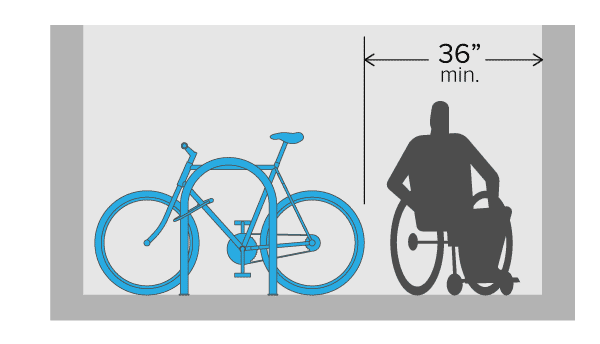
Post-Mounted Protrusions:
The physical design of most bike rack styles make them subject to the ADA specifications for post mounted protrusions, which must be detectable at or below cane sweep height (27 inches) to prevent collisions. If an object protrudes into the pathway between 27 and 80 inches above the ground, it must not extend more than 12 inches into the path
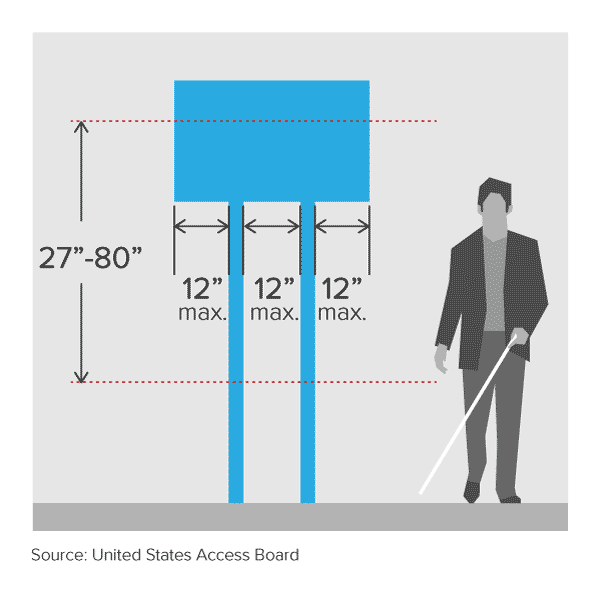
Wall-Mounted Protrustions
People with vision impairments often travel closely along walls which can provide wayfinding cues sometime called a “shoreline.” Objects mounted on walls, partitions, columns, and other elements along circulation paths can pose hazards unless their projection is limited. The area of concern is above the cane sweep 27” and below minimum headroom clearance, 80” – a 53” vulnerability zone. Objects with leading edges that are within cane sweep or that provide minimum headroom clearance do not pose hazards and can protrude any amount. Otherwise, objects located in the vulnerability zone can protrude 4” maximum from the leading edge.
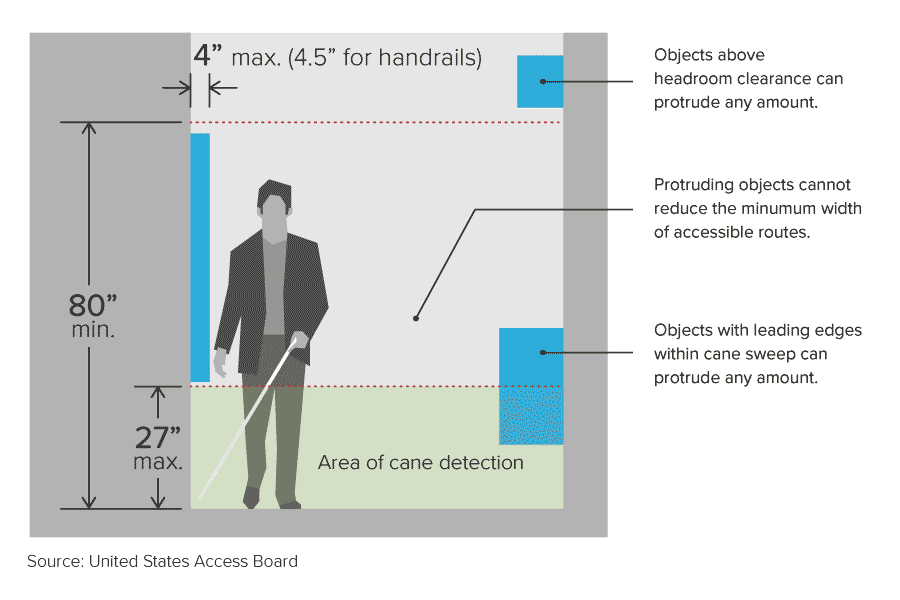
ADA and Dero Products:
In order to contribute to the creation of a welcoming environment for individuals of all abilities, Dero provides options for our standard products that would not otherwise meet these standards.
For example, our Hoop Rack – a typical “staple” style bike rack, would not meet the standard without the addition of a leanbar because the top arc of the rack extends out more than 12” from each upright at a height between 27 and 80 inches. However, the addition of a leanbar creates a cane-detectable barrier within 27” of the ground.
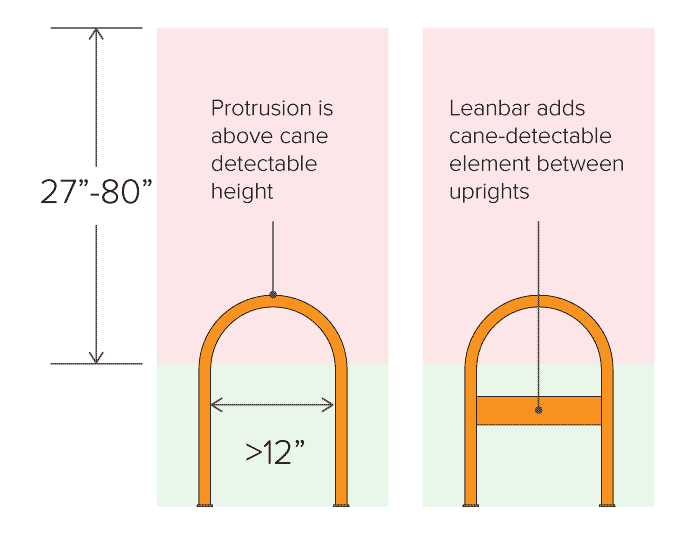
For other products like the Fixit, Dero Decker, and Ultra Space Saver, which also incorporate protruding elements, Dero offers cane-detectable attachments and rails to be installed at their base.
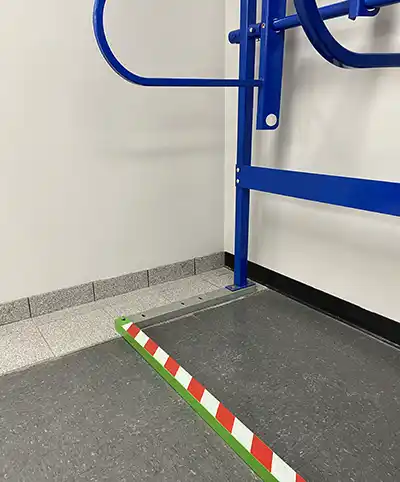
Our Dero Duplex, a two-tiered bike rack with a protruding upper tray, does NOT need additional attachments, as the lower tray already provides a compliant, cane-detectable barrier.
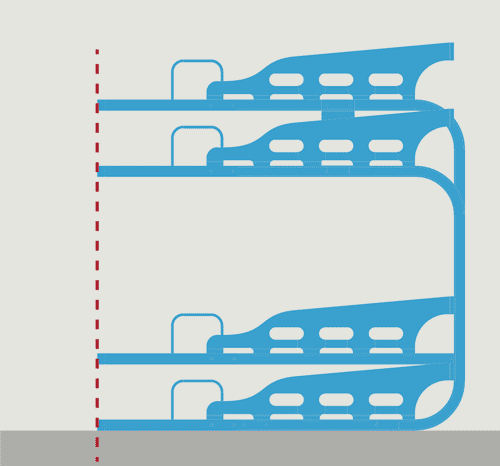
The specially designed handles on our steel bike lockers also meet ADA standards, as they do not require any twisting of the wrist to operate.
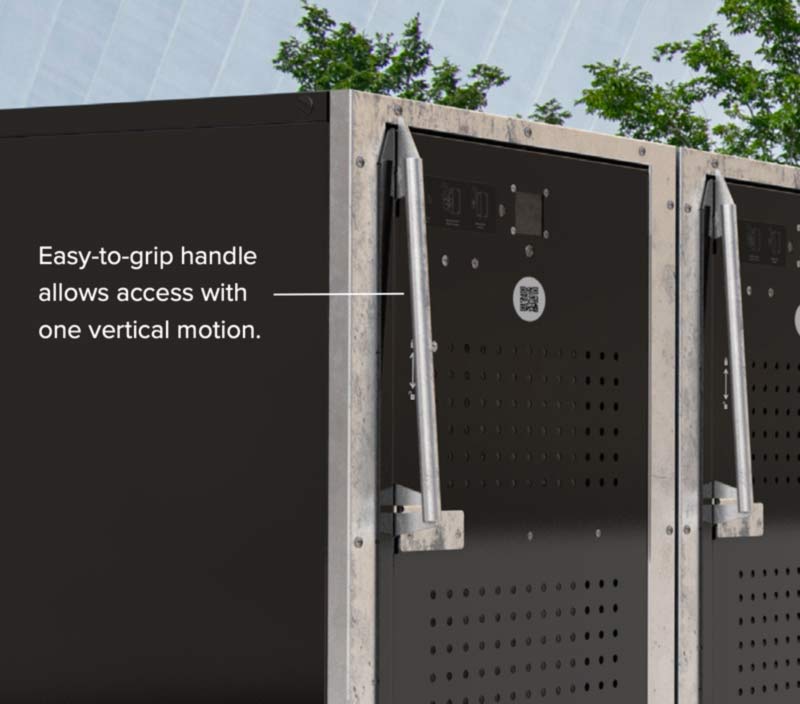
Perhaps the most important thing to consider when building a bike facility with ADA in mind is space itself. The guidelines are just that, often interpreted differently by different people in different locations. Since bike parking facilities aren’t specifically addressed there are elements that are open to interpretation. The key rests in one’s desire to make sure things are accessible. The best way to do that is to make sure there’s plenty of space around a simple rack like a Hoop Rack – or several, depending what’s needed – and that it’s marked ADA Accessible and that the path of ingress and egress is plenty wide, unobstructed, and as close to the nearest circulation path as possible.
Adhering to ADA standards in the design and installation of bike parking infrastructure is a crucial step towards fostering inclusivity in public spaces. By considering the needs of individuals with disabilities, we create amenities that are accessible to everyone and promote a more equitable and diverse community.








